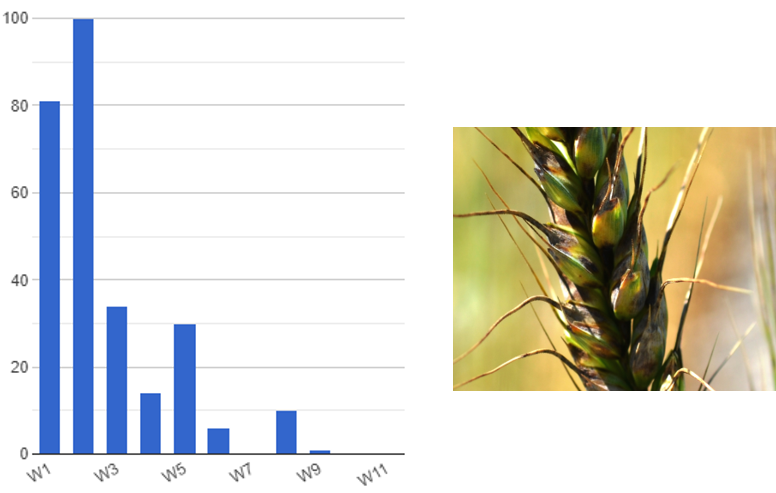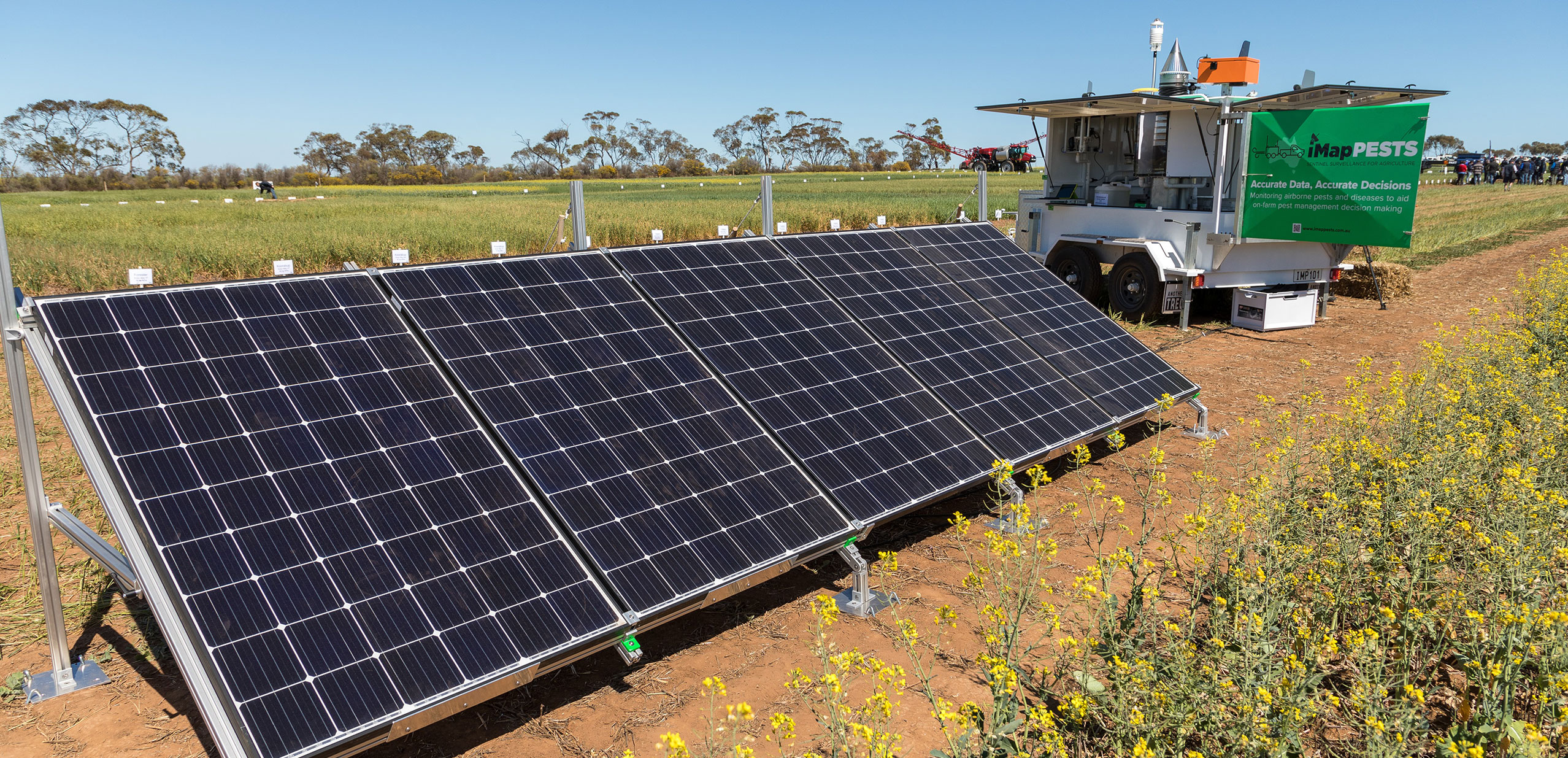Nuriootpa Research Centre, Barossa Valley 2019
Sentinel 1 was trialled beside a vineyard at the Nuriootpa Research Centre over the 2019/2020 summer period. Priority pests and […]
Sentinel 1 was trialled beside a vineyard at the Nuriootpa Research Centre over the 2019/2020 summer period.
Priority pests and pathogens for wine, horticulture & grains were targeted for identification
Insect pests targeted
Green peach aphid (Myzus persicae)
Green mirid (Creontiades dilutus)
Western flower thrips (Frankliniella occidentalis)
Melon cotton aphid (Aphis gossypii)
Russian wheat aphid (Diuraphis noxia)
Oat aphid (Rhopalosiphum padi)
Corn aphid (Rhopalosiphum maidis)
Rose-grain aphid (Metopolophium dirhodum)
Green vegetable bug (Nezara viridula)
Onion thrips (Thrips tabaci)
Light brown apple moth (Epiphyas postvittana)
Fungal pathogens targeted
Botrytis grey mould (Botryitis cinerea)
White grain disorder (E. tritici-australis)
White grain disorder (E. darliae/ pseudodarliae)
Sclerotinia white rot (Sclerotinia minor &/ S. sclerotiorum)
Nuriootpa Research Centre trial summary
Insect data is presented as the total number of each target insect counted in collected samples for each week.
Spore data is normalised to 100% of the maximum counts detected of each target pathogen for each week.
General aphid observations
Aphids (Russian wheat and oat aphid) – There were very low captures of target insects during this surveillance period. A few small spikes in Russian wheat aphids were noted in late November 2019, possibly because of a wind event. Low insect numbers are not unusual, as prevalent hot dry conditions generally discourage insects from taking to the wing. At this time of year, aphids and thrips are merely eking out a living until the rains stimulate host plants to germinate and grow. Insect numbers tend to increase as we start getting more moisture moving into Autumn.
Oat aphid (OA) – Rhopalosiphum padi
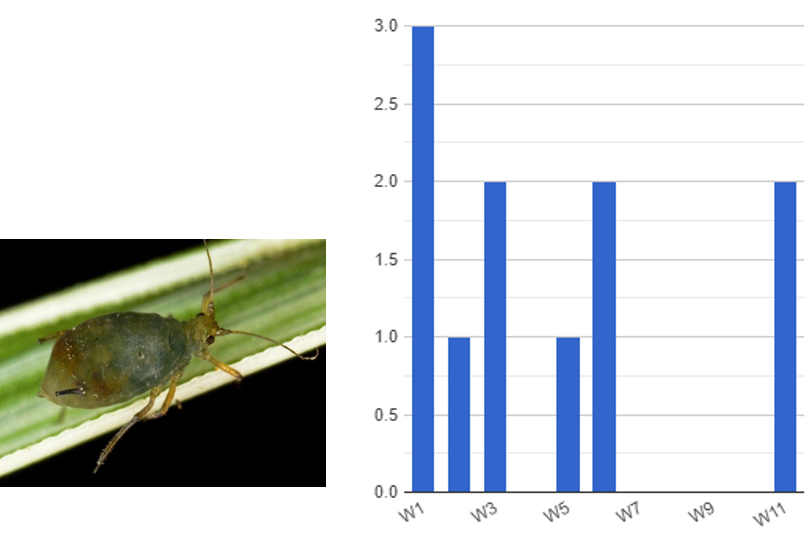
Russian wheat aphid (RWA) – Diuraphis noxia
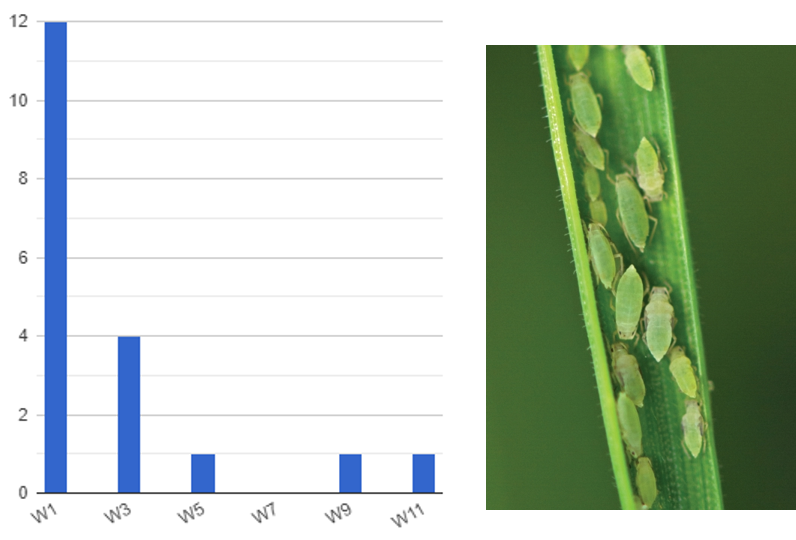
Western flower thrips (WFT) – Frankinella occidentalis
Western flower thrips (WFT) – A few small spikes in Western flower thrips were noted in late November 2019, possibly because of a wind event. These introduced thrips are now ubiquitous in many Australian landscapes due to their wide host range. Whilst rarely an issue in the grains industry, they survive on some crops and build up populations that can impact on vegetable horticulture by the transmission of virus such as Tomato spotted wilt virus. As with aphids, warm weather and decreasing quality of host plants will prompt them to take to the air and be moved about in wind currents. In all the samples, the dominant thrips species was Thrips imaginis (Plague thrips) which may look like WFT but is far less damaging.
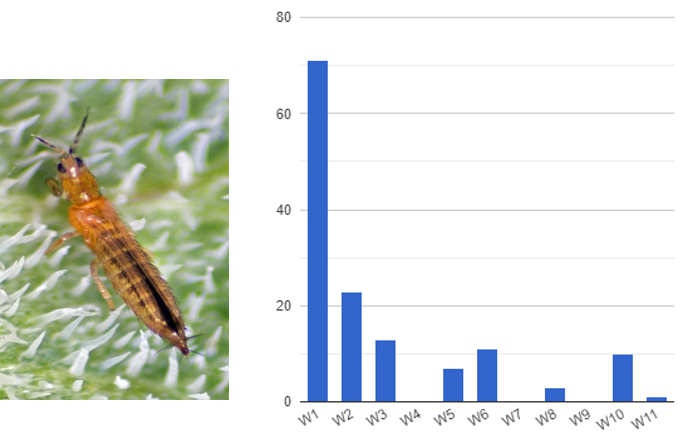
Composition of traps
More aphids were collected in the 6m trap than the 2m trap (no RWA weren’t collected by the 2m trap at all), whereas more thrips were collected in the 2m trap. The shorter suction trap will generally provide information about the insects in the immediate paddock or property, whereas the taller 6m trap will mostly represent what is happening at a larger (potentially regional) scale. Insects captured from 6m height are mostly those that have been caught up in wind currents (small insects) or are flying a migratory pattern (larger insects).
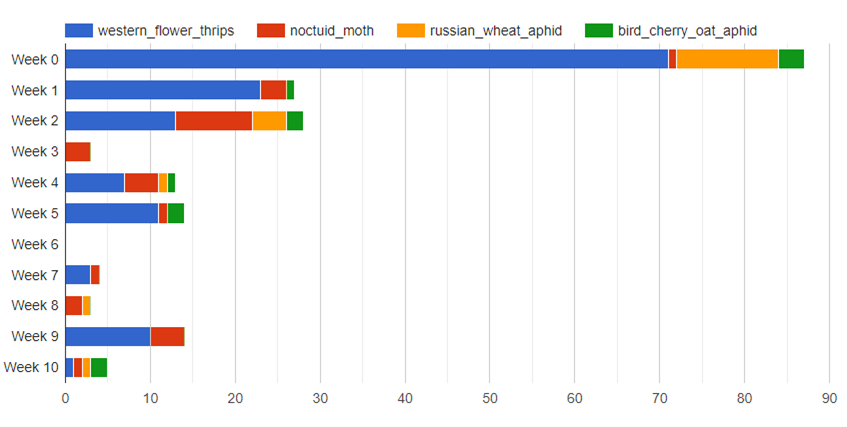
2-metre vs. 6-metre insect suction traps

General pathogen observations
Black leg of canola – Leptosphaeria maculans
Spore release declined over the 11-week period. This reflects the effect of harvest of nearby field canola crops during November/December. Detection of this pathogen may also occur in debris carried in air or dust-storm activity. The pathogen will enter a dormant stage over summer.

Botrytis grey mould – Botrytis cinerea
Maximum spore release was observed in Week 5 but high levels were detected throughout most of the monitoring period (week 3-11). Spore release is typically driven by high humidity and wind events for dispersal within vineyards during flowering, however, these results suggest B. cinerea spores were abundant even during high temperatures and low humidity experienced during December.
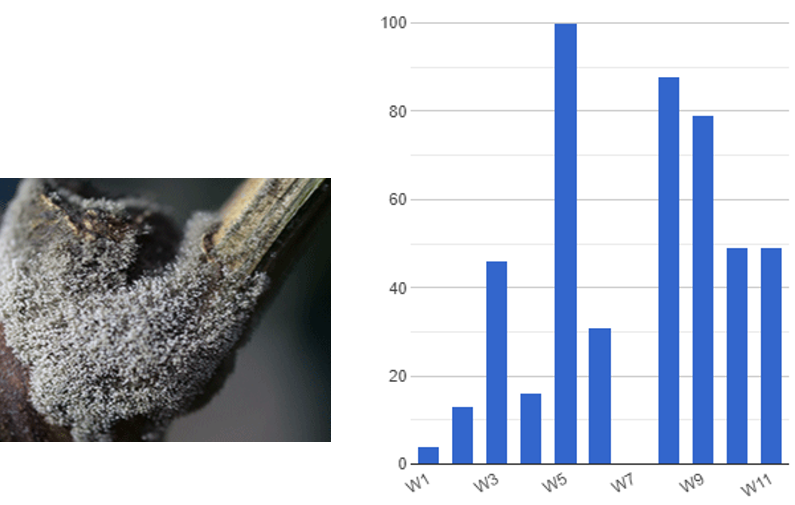
Blackspot of field peas – Didymella pinodes
Several spore release peaks were observed throughout the 11-week period. An initial decline in spore dispersal was observed during week 1-4, as harvest of nearby field pea crops occurred during November/December, but rain events in January (early & late) stimulated further liberation of spores after week 8 which peaked at week 11. Detection of this pathogen may also occur in debris carried in air or dust-storm activity. The pathogen will typically enter a dormant stage over summer.

Septoria – Zymoseptoria tritici
Maximum spore release was observed in Week 1-3. Spore release is typically driven by leaf wetness periods, particularly from leaf debris on the soil surface. Spore dispersal of this pathogen will decline as harvest of nearby field wheat crops during November/December is completed, though detection of the from debris carried in air or dust-storm activity can occur. The pathogen will enter a dormant stage over summer.
